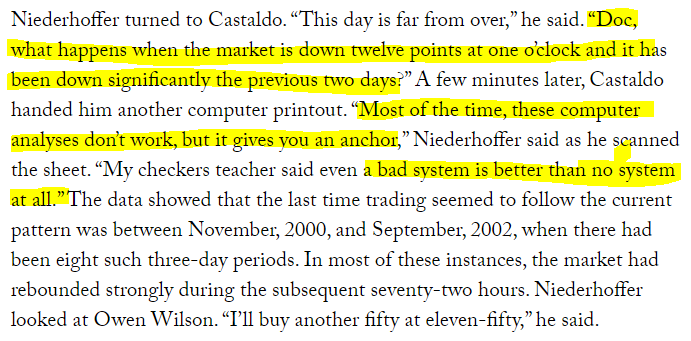In the previous part - here - https://www.niftyscalper.com/blogs/2017/12/7/market-profile-order-flow-footprint-demystified - We got an overview of what these concepts are and how they fit in together.
Now in the part 2 - I am going put together my views on the relevance of these tools, in the context of Intraday trading and Scalping.
Does following the market profile concepts like POC, VPOC, IB, VAH, VAL give you an edge in your trading?
In all fairness, I must say conceptually these make sense, but are of no value in the context of trading decisions if you do not have back-tested probabilities to work with. In other words these things make for good reference values, but that does not help in trading. What you need is probabilities off the references. For example you need to know - % of time POC acts as a support, or once the price crosses IB, you get an extension of y points more than 70% of times. So bottom line, no back-tested probabilities, no use of these concepts.
Does following the ORDER FLOW / FOOTPRINT give you an edge in your trading?
This is a difficult question to answer, it has several parts to it
a) Quality of Data Feed - Like all other things in data analysis, garbage in is garbage out - Though you may have the best of the charting software, if the data feed sends garbage to it, its not going to be of any value. That is one reason, if you compare two foot print charts with data feeds from two different vendors, you should not be surprised to see different data in both the charts. Then there is a larger issue of the quality and nature of the data that the exchange shares with these data feed providers, this is where protocols like ITCH and OUCH come into picture, without which your order-flow becomes less reliable. I seriously doubt if NSE provides such granular data. Read the excerpt below from the book - Machine Trading: Deploying Computer Algorithms to Conquer the Markets - by Ernest P. Chan
b) Back-testing Order-flow Data - Again, you need some references to work with even if you have Orderflow, for instance any buyer of greater than x size leads the trend by y %. This back-testing, is not easy at all given the quality of data that we have. As shared in the excerpt above.
c) Smart money & Orderflow - This one really gets my goat. Let me give you a few examples of what some "experts" claim.
Now let me share something from the horses mouth, ie the makers of these charts. - https://www.sierrachart.com/SupportBoard.php?ThreadID=2119 - Read the text again.
This is like the drivers who claim that their cars can fly, but the manufacturer of the car says you cant. Who do you trust? - I leave it up to you.
However, I do think there is evidence for the use of Cumulative Delta Divergence, but again not without back-testing it.
So to sum it up, I believe if you have backtested price data, that in anyway subsumes volume, if you want you could do correlated backtests along with volume data, even better, but you don't need anything more.
At the end of the day, you also need to understand that we humans cannot process so much of information that multitude of charts and indicators offer, we need to in a way simplify our decision making, by focusing on probabilistic models/frameworks fewer markets and instruments.
With that I rest my case on this.































